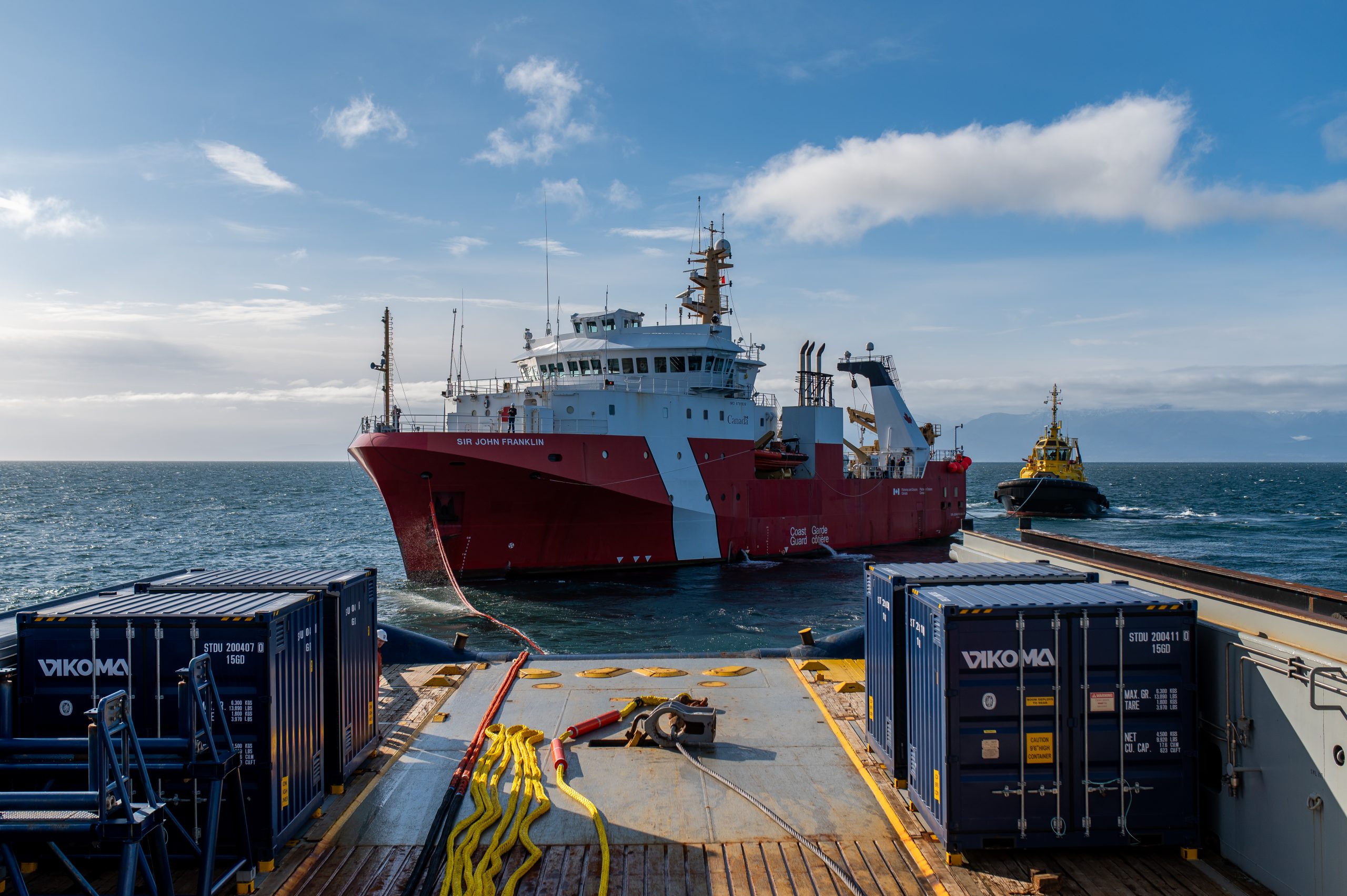British Columbia’s rugged coastline has long shaped the province’s identity—and its economy. Today, the long-familiar tugboat is at the centre of a maritime evolution, guiding massive cargo ships, towing heavy loads, and safeguarding sensitive waters from environmental risk. As international trade booms and B.C.’s ports grow busier, tugboat operations are adapting—blending cutting-edge technology with centuries-old seafaring traditions. From electrification and safety drills to Indigenous partnerships and workforce renewal, the industry is charting a new course for a modern, sustainable coastal economy.
The Power Behind the Ports
Tugboats play a critical role in keeping B.C.’s maritime traffic, and economy, flowing. In B.C.’s busy ports, such as Vancouver and Prince Rupert, they escort cargo ships to and from docks, manoeuvre barges, and step in during emergencies. In April 2025, the safe escorting and docking of the Maran Gas Roxana—a liquefied natural gas carrier—by HaiSea Marine marked a turning point. It was one of the first operations under the new LNG Canada project, and it signalled what’s ahead: more marine traffic, more complex operations, and longer escort distances as Cedar LNG and Woodfibre LNG come online by the end of the decade.
Tugboats also play a frontline role in marine safety. They’re often the first to respond during emergencies and play a big role of safely preventing emergencies becoming disasters. A recent emergency towing and spill response exercise spearheaded by Chief Chipps of the Sc’ianew First Nation and KOTUG Canada—with participation from SAAM Towage, the Western Canada Marine Response Corporation (WCMRC), and the Canadian Coast Guard—showcased how prepared the industry has already become through the investments of the Trans Mountain Expansion Project. These types of coordinated exercises underscore the tugboat industry’s critical role in protecting B.C.’s coastal ecosystems.
But it’s not just the vessels—it’s the network of people behind them. Onboard crews, shore side management, pilots, shippers, equipment suppliers and shipyards all play essential roles. As B.C.’s export capacity expands and port activity increases, so does the demand for these services, making tugboats and their crews an increasingly vital part of Canada’s export infrastructure.
Technology Steering the Future
To stay competitive and sustainable, B.C.’s tugboat operators are investing in technologies to improve both performance and environmental impact. Dual-fuel and electric tugboats are already in service, marking the start of B.C.’s shift toward lower-emission marine operations and aligning with Canada’s 2050 net-zero targets.
Technology also enhances safety and efficiency. Modern tugs now use advanced navigation systems, onboard sensors, and data analytics to reduce maintenance downtime and improve crew performance. This digital evolution is transforming how operators respond to challenges at sea, making operations safer and more resilient.
Environmental stewardship is also top of mind. Tugboat operators and researchers are using data to better understand and mitigate underwater noise—an issue of special concern for Southern Resident killer whales (SRKWs). By analyzing tug-generated noise and comparing it with other vessel types, operators can modify how and when they move through sensitive areas. It’s a delicate balance between operational safety and environmental stewardship, but the technology now exists to support both.
Challenges and a Changing Workforce
The shift toward sustainable tug operations comes with challenges. High up-front costs for new vessels, training programs, and support infrastructure can be daunting—especially for smaller operators. Adapting to new technologies takes time and requires a workforce comfortable with digital tools as well as traditional seamanship.
Compounding the challenge is the fact that many experienced mariners are nearing retirement, and the industry must act quickly to preserve their knowledge. This calls for structured mentorship, formalized training, and policy changes that support workforce renewal. The coming wave of manning and safety management regulations could help catalyze this transition—but only if applied fairly and backed by strong industry support.
There is, however, an opportunity to reimagine what a more inclusive and resilient tugboat workforce could look like. Indigenous Nations along the coast have deep maritime traditions and a growing presence in the marine sector. Partnerships with these Nations—as well as with historically underrepresented groups—are helping open doors to well-paying, long-term careers in marine operations. These partnerships also support reconciliation and foster a deeper cultural connection to the waters B.C.’s tugboats traverse.
What Comes Next
British Columbia is well-positioned to become a global leader in clean marine innovation. With major projects like LNG Canada, Cedar LNG, Woodfibre LNG and Trans Mountain shaping the future of energy exports—and modern tug technology advancing rapidly—the province is positioned to lead not just nationally, but globally. If supported by inclusive workforce development and robust safety protocols, B.C.’s tug sector could help define how port communities worldwide balance economic growth with environmental protection.
Tugboats may not draw the same attention as bigger flashy ships, but they’re essential, versatile vessels. They embody a mix of tradition and innovation—and increasingly, a vision of a maritime future that’s safer, greener, and more inclusive. For B.C., investing in tugboats means investing in the long-term strength of its coastal economy, its environment, and the communities that rely on both.
Tugboats are not just tools of trade—they’re symbols of what’s possible when tradition meets ambition on the water.





